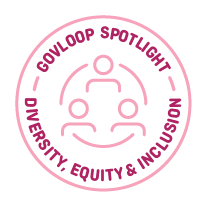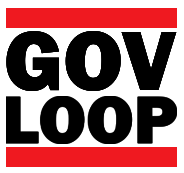The Run-DMC Model of Hybrid Public Meetings

It’s been over two years since the COVID-19 pandemic started. Through all the shutdowns, re-openings, novel variants and re-closings, local governments have continued to run public meetings, keeping participatory democracy operating. We have shifted to online meetings and adopted digital practices to make them as inclusive as possible.
With the global surge in the Omicron variant of COVID-19, many of us are coming to terms with the idea that we are not going back to life as it was. We’re only going through, and life will be different on the other side.
When we look to embrace the future of public participation, we can expect that our communities will want to participate digitally in public meetings, even if the meetings allow in-person attendance. We need to re-evaluate the structure of our town halls, open houses and workshops.
Online-only meetings can use the features built into our collaboration platforms. Zoom and Microsoft Teams have hand-raising, reactions and chat functions that can help a facilitator “read” the room.
Chat and hand-raising functions are becoming second-nature in virtual meetings
But how can we accommodate participants when some are in person and others are virtual? We need to provide equitable participation, but it’s natural to give in-person attendees the benefit of nonverbal communication. How can we run a hybrid meeting where virtual attendees have representation on par with attendees who are physically in the room?
How can we accommodate participants when some are in person and others are virtual?
How can we promote equity in hybrid meetings?
Hip Hop Crew Structure
I said you got to work hard, you want to compete/It’s like that, and that’s the way it is.
“It’s Like That” Run-D.M.C.

In the 1980s, as hip hop was starting to find purchase in popular American culture, Run-D.M.C. was the premiere group at the forefront of this cultural phenomenon. The lyrical interplay between two MCs (Reverend Run and D.M.C.) passing the rhymes back and forth with DJ Jam Master Jay mixing and scratching records became the template for future acts to follow.
Not Run-D.M.C., but many groups use a similar structure
The Run-D.M.C. model worked so well, it’s still the standard structure for hip hop performances 40 years later – think of the Beastie Boys, Public Enemy, The Wu-Tang Clan – most hip hop acts use a similar structure because it works. And it’s worth considering this model for your hybrid public participation events.
The Producer
So check out the Master as he cuts these jams/And look at us with the mics in our hands
“Jam Master Jay” Run-D.M.C.
The essential function of the DJ in a hip hop crew is to keep the beat steady and the music playing so the MCs can deliver their lyrics. The DJ manages the technology to ensure that the music keeps moving. In a hybrid public meeting, this translates to what I’m calling the “producer” role.
Public Participation is practically a hip-hop show
The role of the producer is to manage the meeting facilitation technology to keep the meeting running. The producer is a member of the project team, the public participation facilitation team or another team member who has the ability to represent and advocate for those attending the meeting virtually.
It’s important that the producer has the trust of the meeting’s facilitator and subject matter experts (SMEs) because they will need to break into the presentation on behalf of virtual attendees. Presenters who are interacting with physical attendees might not look to the screen to check if there are questions or hands raised in the meeting facilitation platform. The producer, however, can recognize those cues and signal the presenters that they need to address the needs of virtual attendees. The DJ (or producer) manages the technology to keep the party rocking.
Everyone was treated on an equal basis/No matter what colors, religions or races/We weren’t afraid to show our faces…
“Wake Up” Run-D.M.C.
Walk This Way
How can we put this theory into practice?
At your next public meeting, consider offering hybrid attendance by employing a tech-savvy team member to play the producer role:
- Plan ahead of time to introduce the producer and explain their role to virtual and in-person attendees;
- Design two or more “check-in” moments into your agenda for facilitators and SMEs to touch base with the producer (and by proxy, the virtual audience);
- Honor the producer’s role by acknowledging their requests for pauses, questions, etc. during the meeting; and
- Let the producer be visible in this role – they are performing this service on behalf of all virtual attendees.
Let’s improve our hybrid meetings and build equity among participants, no matter how they attend our meetings! Let me know in the comments how you bridge the hybrid gap! Bonus points if you host your meeting wearing Adidas!
One thing I know is that life is short/So listen up homeboy, give this a thought/The next time someone’s teaching, why don’t you get taught?/Cause it’s like that, and that’s the way it is.
“It’s Like That” Run-D.M.C.

Interested in becoming a Featured Contributor? Email topics you’re interested in covering for GovLoop to [email protected].
Jay Anderson is responsible for digital engagement and public processes at the city of Colorado Springs. Jay holds an MPA from the School of Public Affairs at the University of Colorado – Colorado Springs, where he also serves as the Chair of the Dean’s Community Advisory Board. Jay focuses on the point of engagement between the community and its institutions, creating programs that give a voice to people who want to have an impact on their government.





Leave a Reply
You must be logged in to post a comment.